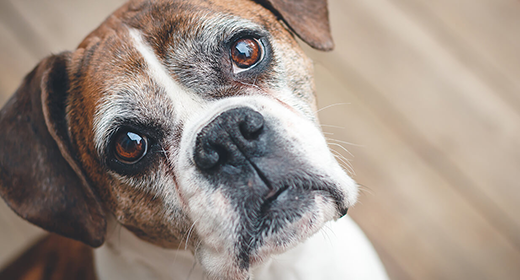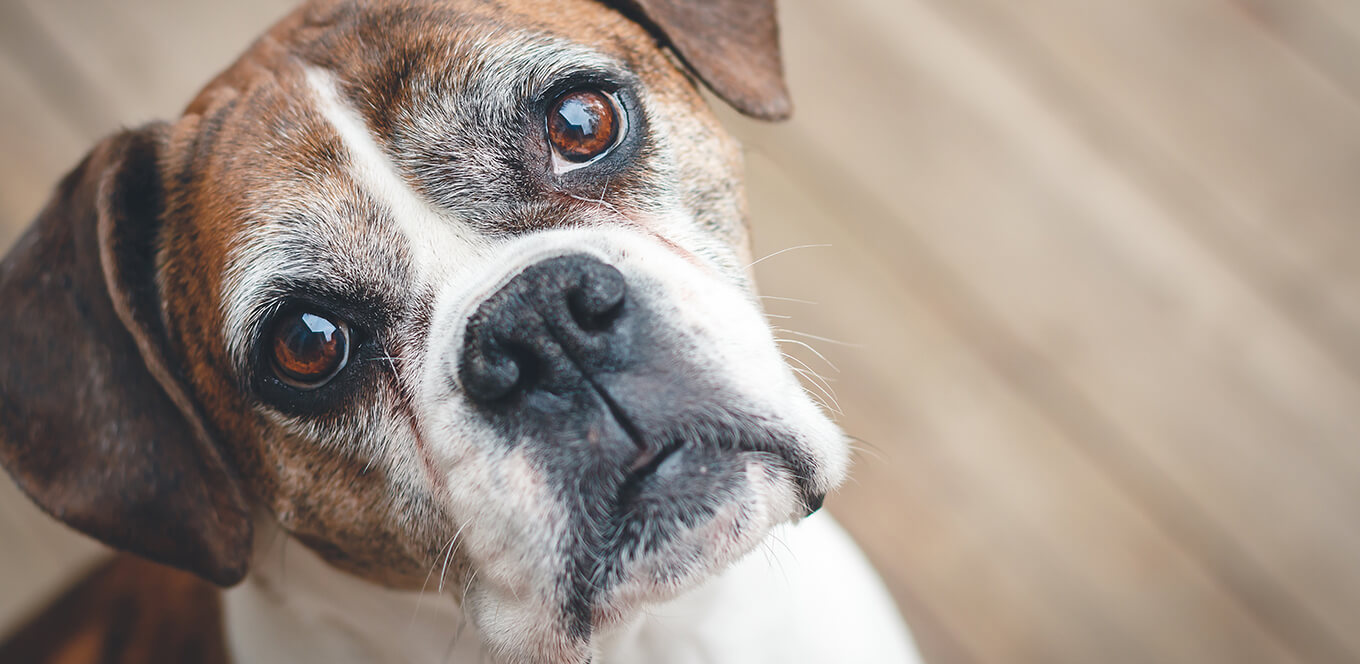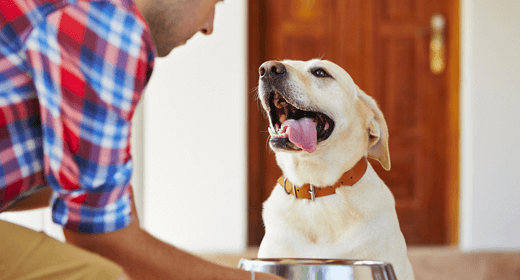

Does your mature dog sniff at his bowl and walk away instead of digging in? You may think he’s just being picky, but it’s important to keep an eye on how much he’s eating — especially if he’s a senior. While age-related diminishment of the senses of smell and taste may account for some of his disinterest in food, appetite loss can also indicate a serious medical problem.
“It’s important to give your dog enough calories because weight loss can be debilitating to senior pets,” says Wendy Brooks, D.V.M., who warns that a loss in appetite should be mentioned to your vet. A good rule of thumb: If your pet hasn’t eaten in a day, make a visit to the vet. Here are six ways to entice your canine friend with a nourishing meal.

Many animals find canned food more palatable because they like the taste and texture, Brooks says. You can top their favorite dry food with room-temperature wet food.
Dogs like a warm or room-temperature (not hot or cold) meal. Avoid serving him day-old wet food from the refrigerator, and keep his food away from heat. Another reason he might not be eating: It's too hot outside.
Dogs prefer consistency when it comes to their food. Don't change every day, but try a new flavor, such as lamb or chicken, and see if he responds (it may trigger his sense of smell). To avoid an upset stomach, introduce a new food by mixing it with his old food in equal increments each day.
Common mature-dog health issues, such as arthritis or joint pain, can make it difficult for him to access his bowls. Keep food and water where he spends most of his time. Put a water bowl on all floors of the house, too.
Older pets are at a higher risk of dehydration. Provide a clean bowl with fresh water at all times. It will help prevent disease, such as a kidney condition, and aid in digestion.
Dogs are people pleasers. If you see him eating, give him a little verbal reward. He'll know it makes you happy and will repeat the behavior.


As a pet parent, do you find yourself wondering how long does dog food last? If so, you’re not alone! In this blog, we will take you through everything you need to know about dog food expiry.
Dogs require a balanced meal every day. As a pet owner, you can choose between dry and wet foods. Dry dog food usually resembles a biscuit or kibble. On the other hand, wet dog food combines meat products or other protein sources with a gravy that incorporates grains, minerals, and vitamins. Whatever your dog finds palatable, make sure their nutritional requirements are met.
Diets that are high in protein are good for dogs. A significant source of energy is found in dietary fats, which are either derived from plant seed oils or animal fats. They offer essential fatty acids, like omega-3s, that are necessary to preserve the health of your dog's skin and coat. Additionally, carbohydrates support your pet's digestive health and provide energy for them to continue with their regular activities.
While it is important to focus on your pet’s daily nutritional intake, you should also make sure that the food packets are still fresh. Serving expired dog food will deprive your canine companion of the key vitamins and minerals they need to keep healthy. Hence, it is important to examine the labels and expiration dates before making a purchase. This way you will be able to understand how long you can keep dog food fresh.
The amount of time a product is useable and suitable for consumption is referred to as its shelf life. In contrast, expiry date is the last day that a perishable product, like food, will be at its highest quality.
If you are wondering does dog food expire, the answer is a yes. In fact, the contents and types of preservatives used do affect the shelf life of a food item. So, to guarantee your dog's safety, pet food producers set expiration or best by dates. Unopened canned foods have a shelf life of two years from the date of manufacturing, whereas unopened dry pet foods typically have a shelf life of 12 to 18 months. Plan to open and use the dog food before the expiration date. You can usually find this date on the bottom of the can containing dog food.
Now that you know dog food expires, let’s examine the effects of serving expired food to your pet:
After consuming spoiled food, dogs generally exhibit the same gastrointestinal symptoms as people do. These symptoms could include vomiting, diarrhea, and passing wind. Spoiled foods can also contain bacteria that can disturb the equilibrium in the gut and intestines, causing the body to excrete more fluids in an effort to wash them out. What’s more is that moldy dog food can contain mycotoxins like vomitoxin, which can cause serious gastrointestinal disorders.
Dogs can become paralyzed from botulism. It is a rare condition occurring when canines consume contaminated food. The poison gets absorbed in the intestines and passes into the bloodstream, thus paralyzing dogs.
Another consequence of feeding your pet spoiled dog food is malnutrition. Before turning moldy, spoiled foods usually lose their vitamin and mineral value. This suggests that even if the food doesn't upset your dog's stomach, it is still not giving your pet what they require. Your dog may become lethargic if daily nutritional demands aren't met. This can eventually result in bone issues and organ failure, if not recognized as early as possible.
Even if you have a food item that is still within its best by date, improper storage could lead to early contamination and food degradation. Here are some steps you must take to prolong the shelf life and maintain food quality:
Purchasing multiple boxes of treats may save you from making repeat visits to the shop. However, keeping so much stock might increase the likelihood that your dog's food goes bad before it gets completely consumed. Therefore, shop frequently if you don’t want your dog’s food to expire.
The shelf life of fresh, wet items can be increased by keeping them in the freezer. Any unopened canned food should be sealed with plastic wrap and stored in the refrigerator.
Dog food that has expired needs to be tossed out right away. There are also waste management facilities that compost used pet food.